
January 1, 2026


| “Were it not for the acquisition of Cranium ... the whole of 2008 would have been negative.” |
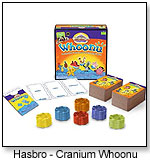 What prompted this prediction was that for the first time there were several potent competitors threatening Hasbro’s pre-eminence. Also, for the first time, Hasbro could no longer follow its time-honored tradition of buying emerging upstarts, as it had last done in January 2008 with Cranium.
What prompted this prediction was that for the first time there were several potent competitors threatening Hasbro’s pre-eminence. Also, for the first time, Hasbro could no longer follow its time-honored tradition of buying emerging upstarts, as it had last done in January 2008 with Cranium. | Category | 2007 $M NPD | 2008 $M NPD | +/-% | Retail Panel 1st Q 2009 +/-% | Retail Panel 2nd Q 2009 +/-% | Retail Panel 3rd Q 2009 +/-% | Retail Panel Oct-Nov 2009 +/-% |
| Games & Puzzles | 2,300 | 2,300 | +0 | +3 | +4 | +3 | +5 |
| Total Toy Market | 22,300 | 21,440* | -4 | -6 | -4 | -6 | -4 |
| Period | 1st Q 2008 $ M | 2nd Q 2008 $ M | 3rd Q 2008 $ M | 4th Q 2008 $ M | Year 2008 $ M |
| Hasbro Games & Puzzles |
210 +9.9% | 257 +15.6% | 421 +4.6% | 452 -10.7% | 1340 +1.3% |
| Period | 1st Q 2009 $ M | 2nd Q 2009 $ M | 3rd Q 2009 $ M | 4th Q E 2009 $ M | Year E 2009 $ M |
| Hasbro Games & Puzzles | 213 + 1% | 214 -16% | 379 -10% | 430 -5% | 1236 -8% |
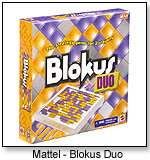 1. Mattel. Mattel has had about 10 percent of the games category in the United States for several years. It changed the equation when it bought Sekkoia, a French toy manufacturer, in early January, obtaining one game really worth having: Blokus, winner of the coveted Mensa award for promoting healthy brain activity. The rules are simple: Each player places his pieces on the board in turn, ensuring that pieces of the same color touch at one or more corners, but never along the sides. The object is to strategize and place as many pieces as possible before an opponent beats you to it.
1. Mattel. Mattel has had about 10 percent of the games category in the United States for several years. It changed the equation when it bought Sekkoia, a French toy manufacturer, in early January, obtaining one game really worth having: Blokus, winner of the coveted Mensa award for promoting healthy brain activity. The rules are simple: Each player places his pieces on the board in turn, ensuring that pieces of the same color touch at one or more corners, but never along the sides. The object is to strategize and place as many pieces as possible before an opponent beats you to it.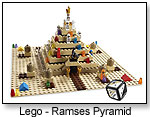 According to Michael McNally, brand relations director at Lego USA, the company had very aggressive 2009 sales expectations in both countries, and actual sales were exceeding these — obtaining a 3.5-percent market share in Germany and 4.7 percent in the UK at the end of October, a mere three months after introduction. According to my friends at Europe’s large toy retailers in the two countries, market shares are expected to hit around 6 percent in both countries by year end.
According to Michael McNally, brand relations director at Lego USA, the company had very aggressive 2009 sales expectations in both countries, and actual sales were exceeding these — obtaining a 3.5-percent market share in Germany and 4.7 percent in the UK at the end of October, a mere three months after introduction. According to my friends at Europe’s large toy retailers in the two countries, market shares are expected to hit around 6 percent in both countries by year end.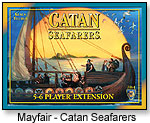 Players try to be the dominant force on the island of Catan by building settlements, cities and roads. On each turn, dice are rolled to determine what resources the island produces. Players collect these resources to build up their civilizations to get the points necessary to win the game. It is a clever and entertaining game in which strategy is considerably more important than luck.
Players try to be the dominant force on the island of Catan by building settlements, cities and roads. On each turn, dice are rolled to determine what resources the island produces. Players collect these resources to build up their civilizations to get the points necessary to win the game. It is a clever and entertaining game in which strategy is considerably more important than luck.| Demographics | Catan % | Blokus % | Lego % | Monopoly % |
| Female | 52 | 45 | 49 | 61 |
| 17 and under | 30 | 20 | 56 | 6 |
| Caucasian | 78 | 84 | 83 | 83 |
| Families with kids | 48 | 44 | 70 | 48 |
| Income $30 K or below | 34 | 18 | 13 | 31 |
| No college education | 24 | 33 | 35 | 42 |
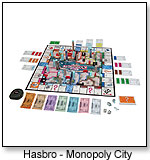 The Monopoly consumer has a much higher female content, is much older than the other three, and is less educated. In contrast, Lego, whose profile reflects the traditional consumer group for the brand, has the most affluent consumer group of the three, has the youngest age weight and has the edge in terms of families with kids, which is very important given the fact that board games tend to be mostly family affairs. The Blokus and Catan consumers are very much middle of the road. My sense is that the Lego profile is more optimal than that of the other two newcomers, in terms of promising growth over the long term.
The Monopoly consumer has a much higher female content, is much older than the other three, and is less educated. In contrast, Lego, whose profile reflects the traditional consumer group for the brand, has the most affluent consumer group of the three, has the youngest age weight and has the edge in terms of families with kids, which is very important given the fact that board games tend to be mostly family affairs. The Blokus and Catan consumers are very much middle of the road. My sense is that the Lego profile is more optimal than that of the other two newcomers, in terms of promising growth over the long term. Settlers of Catan by MAYFAIR GAMES INC.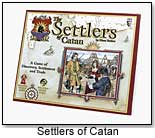
Imported from Germany to the U.S. in 1995, this European designer game is thematically nonviolent, elegant in game play and visually appealing. Players must collect and trade resources, such as wood and sheep, and build the best settlement on an island. Moves require strategic planning, and negotiating and trade are crucial elements of the game.
— "The Settlers of Catan is extremely popular with boys over 12. It's a great game that’s a combination of Risk and Monopoly," was the analysis provided by Leanna Halbrecht, owner of Animations in Teaneck, N.J.
— "I'm having a lot of interest in Settlers of Catan and its expansion packs," added Amy Barrett, owner of Lasso the Moon Wonderful Toys in Helena, Mont. “Games such as Settlers of Catan … are becoming more popular,” said Owner David Campbell of Amazing Toys in early 2009. — This game has been exciting kids — and specialty retailers — for years. Its long-running status as a top seller earned it a TDmonthly Classic Toy 2007 award. 1/18/2005 (MSRP: $42.00; Age: 12 and Up)
Blokus by MATTEL INC.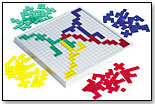 Europe´s 2002 game of the year, Blokus is a strategy game for the family. It's similar to the ancient Go Game — the board is a grid and players use their pieces to try to control as much territory as possible. The game pieces are in four, 21-piece sets of varying shapes. Each player chooses a color and works on expanding his territory on the board while blocking others from doing the same. Each new piece laid down must touch at least one other piece of the same color, but can only touch at corners, not along edges. The game ends when all players have been blocked from laying down more pieces. Points are deducted for pieces not played, and the player with the highest score at the end, wins. Blokus comes with a game board with 400 squares, 84 game pieces (red, green, blue and yellow), and instructions.
Europe´s 2002 game of the year, Blokus is a strategy game for the family. It's similar to the ancient Go Game — the board is a grid and players use their pieces to try to control as much territory as possible. The game pieces are in four, 21-piece sets of varying shapes. Each player chooses a color and works on expanding his territory on the board while blocking others from doing the same. Each new piece laid down must touch at least one other piece of the same color, but can only touch at corners, not along edges. The game ends when all players have been blocked from laying down more pieces. Points are deducted for pieces not played, and the player with the highest score at the end, wins. Blokus comes with a game board with 400 squares, 84 game pieces (red, green, blue and yellow), and instructions.
— In spring 2007, Sally Lesser, owner of Massachusetts’ Henry Bear’s Park, called Blokus a “consistent best-seller” at her three stores. It's also tops at Juggles in Wakefield, R.I., and Kazoodles in Vancouver, Wash. Six of 63 retailers named Blokus as their overall best seller in September 2008. Three of 52 retailers named Blokus as one of their overall top sellers in November 2008. Blokus is no longer distributed by Educational Insights as of 12/4/08.
― “No. 1 is Blokus,” Linda Hanzelko, owner of Timmy's Toy Chest in Lake Mary, Fla., told TDmonthly when asked about best-selling games in early 2009. “It's an easy sell. It's one that people come back later and say 'You were right.'” In late 2009, Lori Hershman, owner of Evan's Toy Shoppe in Hamden, Ct., estimated sales of about 34 units monthly. Six of 38 retailers called it a best-selling game in Feb. 2010, selling from three to 150 units per month. 5/27/2005 (MSRP: $29.99; Age: 5 to 12)
Cranium - Family Edition by HASBRO INC.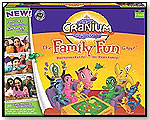 Just as fun for adults as it is for kids, Cranium Family Edition features activities that challenge adults, too. From balancing cubes on elbows to deciding what the most popular pet was in ancient Egypt, kids and parents alike will celebrate the wacky collaboration that results from the outrageous activities teams are asked to complete. To play, teams work together to race around the board by completing a mix of classic and all-new CRANIUM activities, including sketching, acting, solving word and picture puzzles, completing scavenger hunts, sculpting with purple Cranium Clay and more. The Data Head in your family will love guessing how many NFL teams are named after birds and trying to remember the first five gifts in “The Twelve Days of Christmas,” while the Creative Cat will enjoy sculpting a turtle out of Cranium Clay or attempting to draw a palm tree with their eyes closed. Launch: 2008. 9/25/2008 (MSRP: $19.99; Age: 8 and Up)
Just as fun for adults as it is for kids, Cranium Family Edition features activities that challenge adults, too. From balancing cubes on elbows to deciding what the most popular pet was in ancient Egypt, kids and parents alike will celebrate the wacky collaboration that results from the outrageous activities teams are asked to complete. To play, teams work together to race around the board by completing a mix of classic and all-new CRANIUM activities, including sketching, acting, solving word and picture puzzles, completing scavenger hunts, sculpting with purple Cranium Clay and more. The Data Head in your family will love guessing how many NFL teams are named after birds and trying to remember the first five gifts in “The Twelve Days of Christmas,” while the Creative Cat will enjoy sculpting a turtle out of Cranium Clay or attempting to draw a palm tree with their eyes closed. Launch: 2008. 9/25/2008 (MSRP: $19.99; Age: 8 and Up)
Monopoly Here & Now: The World Edition by HASBRO INC.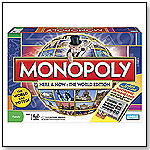 This world-class MONOPOLY game for two to six players take participants to global cities on six continents. Each player has a MONOPOLY credit card, plus a digital device that acts as a bank to track the balance. It requires two AA batteries (not included). 9/24/2008 (MSRP: $34.99; Age: 8 and Up)
This world-class MONOPOLY game for two to six players take participants to global cities on six continents. Each player has a MONOPOLY credit card, plus a digital device that acts as a bank to track the balance. It requires two AA batteries (not included). 9/24/2008 (MSRP: $34.99; Age: 8 and Up)
Copyright © 2026 TDmonthly®, a division of TOYDIRECTORY.com®,
Inc.